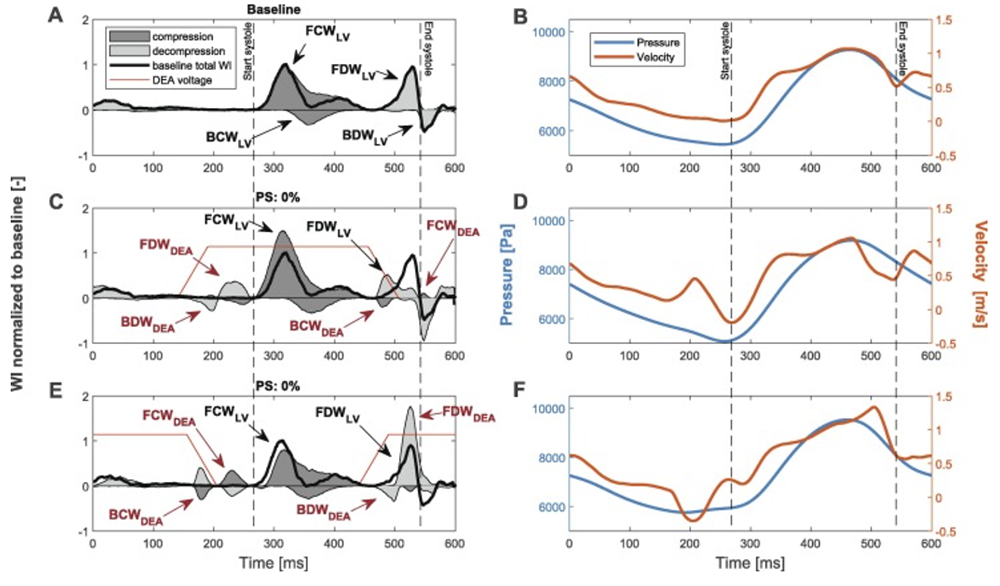2023/09/13 | Research | Biomechanics
How an aorta actuator influences hemodynamics
Dielectric elastomer actuator augmented aorta (DEA) is a novel soft tubular device replacing a section of the aorta to support failing hearts. In collaboration with the Center for Artificial Muscles CAM at EPFL, the ARTORG Cardiovascular Engineering group has investigated the hemodynamic effects of the DEA on the aortic wave intensity pattern. Results point to an optimal timing of actuation with respect to the activity of the left ventricle.
 Figure 3: Wave intensity (WI) pattern: C and E show the averaged WI pattern seen for 0% and 50% actuation phase shift (PS) compared to baseline (A). B, D and F show the corresponding pressure and velocity.
(https://doi.org/10.1016/j.jbiomech.2023.111777)
Figure 3: Wave intensity (WI) pattern: C and E show the averaged WI pattern seen for 0% and 50% actuation phase shift (PS) compared to baseline (A). B, D and F show the corresponding pressure and velocity.
(https://doi.org/10.1016/j.jbiomech.2023.111777)
In an in-vivo study with an animal model, the wave intensity with implanted DEA was calculated from aortic blood pressure and velocity measured in the descending aorta. The DEAs were tested for different actuation phase shifts. The DEA-generated waves interfered with waves generated by the left ventricle, and the timing of the waves affected the hemodynamic efficiency of the device. Optimal performance was achieved when the decompression wave generated by the DEA arrived just before aortic valve opening and the compression wave arrived just before valve closure.